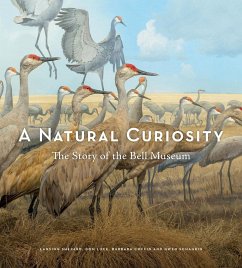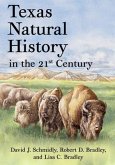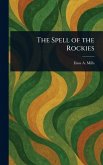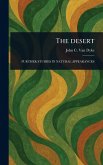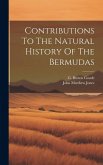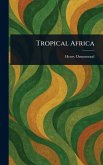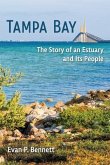Barbara Coffin, Don Luce, Gwen Schagrin, Lansing Shepard
A Natural Curiosity
The Story of the Bell Museum
Barbara Coffin, Don Luce, Gwen Schagrin, Lansing Shepard
A Natural Curiosity
The Story of the Bell Museum
- Gebundenes Buch
- Merkliste
- Auf die Merkliste
- Bewerten Bewerten
- Teilen
- Produkt teilen
- Produkterinnerung
- Produkterinnerung
"A richly illustrated tour of Minnesota's premier natural history museum after 150 years"--
Andere Kunden interessierten sich auch für
![Texas Natural History in the 21st Century Texas Natural History in the 21st Century]() David J SchmidlyTexas Natural History in the 21st Century33,99 €
David J SchmidlyTexas Natural History in the 21st Century33,99 €![The Spell of the Rockies The Spell of the Rockies]() Enos A MillsThe Spell of the Rockies30,99 €
Enos A MillsThe Spell of the Rockies30,99 €![Sahara Sahara]() Angus BuchananSahara31,99 €
Angus BuchananSahara31,99 €![The Desert The Desert]() John C van DykeThe Desert29,99 €
John C van DykeThe Desert29,99 €![Contributions To The Natural History Of The Bermudas Contributions To The Natural History Of The Bermudas]() Jones John MatthewContributions To The Natural History Of The Bermudas37,99 €
Jones John MatthewContributions To The Natural History Of The Bermudas37,99 €![Tropical Africa Tropical Africa]() Henry DrummondTropical Africa29,99 €
Henry DrummondTropical Africa29,99 €![Tampa Bay Tampa Bay]() Evan P BennettTampa Bay106,99 €
Evan P BennettTampa Bay106,99 €-
-
-
"A richly illustrated tour of Minnesota's premier natural history museum after 150 years"--
Produktdetails
- Produktdetails
- Verlag: University of Minnesota Press
- Seitenzahl: 400
- Erscheinungstermin: 26. April 2022
- Englisch
- Abmessung: 256mm x 230mm x 26mm
- Gewicht: 1293g
- ISBN-13: 9781517910365
- ISBN-10: 1517910366
- Artikelnr.: 61658400
- Herstellerkennzeichnung
- Libri GmbH
- Europaallee 1
- 36244 Bad Hersfeld
- gpsr@libri.de
- Verlag: University of Minnesota Press
- Seitenzahl: 400
- Erscheinungstermin: 26. April 2022
- Englisch
- Abmessung: 256mm x 230mm x 26mm
- Gewicht: 1293g
- ISBN-13: 9781517910365
- ISBN-10: 1517910366
- Artikelnr.: 61658400
- Herstellerkennzeichnung
- Libri GmbH
- Europaallee 1
- 36244 Bad Hersfeld
- gpsr@libri.de
Lansing Shepard is a writer who specializes in conservation, environmental policy, and natural history. He is coauthor of This Perennial Land: Third Crops, Blue Earth, and the Road to a Restorative Agriculture and author of the Northern Plains volume of The Smithsonian Guides to Natural America series. He has written for the Bell Museum’s IMPRINT publication, contributed to exhibition scripts, and coauthored the television documentary Minnesota: A History of the Land. Don Luce is Bell Museum Curator of Exhibits. For more than forty years he has curated most of the museum’s temporary exhibitions, including Exploring Evolution, The Lion’s Mane, Wildlife Art in America, and Audubon and the Art of Birds. He initiated the Bell’s traveling exhibitions program, developed and expanded its natural history art collection, and played a key role in the conception and design of the new museum’s permanent exhibit gallery, Minnesota Journeys. Barbara Coffin has promoted the conservation and understanding of Minnesota’s natural world throughout her career. She is the former head of media productions and adult programs at the Bell Museum and played an important role in the design of the new museum’s exhibit galleries. She is executive producer of the Emmy Award–winning television documentary Minnesota: A History of the Land and coeditor of Minnesota’s Endangered Flora and Fauna (Minnesota, 1988). Gwen Schagrin has worked in exhibits research, design, and production at the Bell Museum since 1992, contributing to the museum’s Wildlife Art in America publication and the preservation and management of its wildlife art collection. She served as special exhibitions assistant curator for Audubon and the Art of Birds and was a coauthor of its exhibition guidebook.
Contents
Foreword
Ford W. Bell
Introduction
Bell Museum Timeline
1. A Museum is Born, 1872–1940
Documenting Minnesota: The Geological and Natural History Survey
The Menage Expedition: How Orangutan Bones Landed in the Bell Museum
Collections
Josephine Tilden: Paving the Way for Women in Science
T. S. Roberts: Naturalist, Doctor, Director
Making a Museum for the Public: The Early Dioramas
2. Growing an Institution, 1920s–1950s
The Many Talents of Walter Breckenridge
Early Public Education: Reaching “the whole people . . .”
James Ford Bell: The Man Behind the Name
Heyday of the Dioramas: Windows into Nature
Taking Flight: The Artistic Journey of Francis Lee Jaques
3. Wildlife Explorations, 1940s–1980s
At the Poles: Arctic and Antarctic Research
The Bride Wore . . . Boots?
Migrations: The Life and Times of Dwain Warner
Tracking Nature: The Rise of Wildlife Telemetry
Mystery of the Missing Toads
4. The Museum in the Environmental Era, 1960s–1990s
Touch and See: Pioneering Hands-On Learning
Public Programs: From Education to Engagement
Interpreting Nature: The Student Guide Program
From Student Guide to College Professor
Making Movies: Reaching a Bigger Audience
Honeybees on the Roof: Sweetening Science Education
Widening the Inquiry: Bringing together Ecology, Evolution, and Behavior
Nature vs Nurture: Frank McKinney and the Evolution of Animal Behavior
Minnesota’s Rarest: Naming the State’s Endangered Flora and Fauna
Flight of the Peregrine: Bud Tordoff and the Return of an Endangered
Species
Art and Natural History: The Evolution of a Legacy
Science through the Lens of Art: Resident Artists at the Bell
Change Comes to the “Eternal” Museum: Temporary and Traveling Exhibits
5. Rediscovering the Collections, 1980s–2022
Collections offer Clues to Environmental Challenges
A Botanical Treasure: The University of Minnesota Herbarium
The DNA Revolution Comes to the Bell Museum
Re-thinking the Tree of Life
Bell Museum Scientists on the Global Stage
Biodiversity Research: Understanding Life’s Threatened Diversity
100 Years Later: Minnesota Updates its Natural History Survey
Collections Go Online
6. A Museum for the Twenty-first Century, 1990s–2022
Saving an Endangered Museum: Surviving and Thriving in a University Setting
From the Earth to the Cosmos: The Journey of Minnesota’s Planetarium
The Ride of His Life
The Road to a Re-Imagined Museum
Designing with Nature: The Bell Museum’s New Home
Moving Minnesota: Dioramas in a New Habitat
The Experience: A Journey through Time
Afterword
Denise Young
Acknowledgments
Appendixes
The Bell Dioramas
Select Exhibitions at the Bell Museum
Publications of the Bell Museum
Select References
Contributors
Index
Foreword
Ford W. Bell
Introduction
Bell Museum Timeline
1. A Museum is Born, 1872–1940
Documenting Minnesota: The Geological and Natural History Survey
The Menage Expedition: How Orangutan Bones Landed in the Bell Museum
Collections
Josephine Tilden: Paving the Way for Women in Science
T. S. Roberts: Naturalist, Doctor, Director
Making a Museum for the Public: The Early Dioramas
2. Growing an Institution, 1920s–1950s
The Many Talents of Walter Breckenridge
Early Public Education: Reaching “the whole people . . .”
James Ford Bell: The Man Behind the Name
Heyday of the Dioramas: Windows into Nature
Taking Flight: The Artistic Journey of Francis Lee Jaques
3. Wildlife Explorations, 1940s–1980s
At the Poles: Arctic and Antarctic Research
The Bride Wore . . . Boots?
Migrations: The Life and Times of Dwain Warner
Tracking Nature: The Rise of Wildlife Telemetry
Mystery of the Missing Toads
4. The Museum in the Environmental Era, 1960s–1990s
Touch and See: Pioneering Hands-On Learning
Public Programs: From Education to Engagement
Interpreting Nature: The Student Guide Program
From Student Guide to College Professor
Making Movies: Reaching a Bigger Audience
Honeybees on the Roof: Sweetening Science Education
Widening the Inquiry: Bringing together Ecology, Evolution, and Behavior
Nature vs Nurture: Frank McKinney and the Evolution of Animal Behavior
Minnesota’s Rarest: Naming the State’s Endangered Flora and Fauna
Flight of the Peregrine: Bud Tordoff and the Return of an Endangered
Species
Art and Natural History: The Evolution of a Legacy
Science through the Lens of Art: Resident Artists at the Bell
Change Comes to the “Eternal” Museum: Temporary and Traveling Exhibits
5. Rediscovering the Collections, 1980s–2022
Collections offer Clues to Environmental Challenges
A Botanical Treasure: The University of Minnesota Herbarium
The DNA Revolution Comes to the Bell Museum
Re-thinking the Tree of Life
Bell Museum Scientists on the Global Stage
Biodiversity Research: Understanding Life’s Threatened Diversity
100 Years Later: Minnesota Updates its Natural History Survey
Collections Go Online
6. A Museum for the Twenty-first Century, 1990s–2022
Saving an Endangered Museum: Surviving and Thriving in a University Setting
From the Earth to the Cosmos: The Journey of Minnesota’s Planetarium
The Ride of His Life
The Road to a Re-Imagined Museum
Designing with Nature: The Bell Museum’s New Home
Moving Minnesota: Dioramas in a New Habitat
The Experience: A Journey through Time
Afterword
Denise Young
Acknowledgments
Appendixes
The Bell Dioramas
Select Exhibitions at the Bell Museum
Publications of the Bell Museum
Select References
Contributors
Index
Contents
Foreword
Ford W. Bell
Introduction
Bell Museum Timeline
1. A Museum is Born, 1872–1940
Documenting Minnesota: The Geological and Natural History Survey
The Menage Expedition: How Orangutan Bones Landed in the Bell Museum
Collections
Josephine Tilden: Paving the Way for Women in Science
T. S. Roberts: Naturalist, Doctor, Director
Making a Museum for the Public: The Early Dioramas
2. Growing an Institution, 1920s–1950s
The Many Talents of Walter Breckenridge
Early Public Education: Reaching “the whole people . . .”
James Ford Bell: The Man Behind the Name
Heyday of the Dioramas: Windows into Nature
Taking Flight: The Artistic Journey of Francis Lee Jaques
3. Wildlife Explorations, 1940s–1980s
At the Poles: Arctic and Antarctic Research
The Bride Wore . . . Boots?
Migrations: The Life and Times of Dwain Warner
Tracking Nature: The Rise of Wildlife Telemetry
Mystery of the Missing Toads
4. The Museum in the Environmental Era, 1960s–1990s
Touch and See: Pioneering Hands-On Learning
Public Programs: From Education to Engagement
Interpreting Nature: The Student Guide Program
From Student Guide to College Professor
Making Movies: Reaching a Bigger Audience
Honeybees on the Roof: Sweetening Science Education
Widening the Inquiry: Bringing together Ecology, Evolution, and Behavior
Nature vs Nurture: Frank McKinney and the Evolution of Animal Behavior
Minnesota’s Rarest: Naming the State’s Endangered Flora and Fauna
Flight of the Peregrine: Bud Tordoff and the Return of an Endangered
Species
Art and Natural History: The Evolution of a Legacy
Science through the Lens of Art: Resident Artists at the Bell
Change Comes to the “Eternal” Museum: Temporary and Traveling Exhibits
5. Rediscovering the Collections, 1980s–2022
Collections offer Clues to Environmental Challenges
A Botanical Treasure: The University of Minnesota Herbarium
The DNA Revolution Comes to the Bell Museum
Re-thinking the Tree of Life
Bell Museum Scientists on the Global Stage
Biodiversity Research: Understanding Life’s Threatened Diversity
100 Years Later: Minnesota Updates its Natural History Survey
Collections Go Online
6. A Museum for the Twenty-first Century, 1990s–2022
Saving an Endangered Museum: Surviving and Thriving in a University Setting
From the Earth to the Cosmos: The Journey of Minnesota’s Planetarium
The Ride of His Life
The Road to a Re-Imagined Museum
Designing with Nature: The Bell Museum’s New Home
Moving Minnesota: Dioramas in a New Habitat
The Experience: A Journey through Time
Afterword
Denise Young
Acknowledgments
Appendixes
The Bell Dioramas
Select Exhibitions at the Bell Museum
Publications of the Bell Museum
Select References
Contributors
Index
Foreword
Ford W. Bell
Introduction
Bell Museum Timeline
1. A Museum is Born, 1872–1940
Documenting Minnesota: The Geological and Natural History Survey
The Menage Expedition: How Orangutan Bones Landed in the Bell Museum
Collections
Josephine Tilden: Paving the Way for Women in Science
T. S. Roberts: Naturalist, Doctor, Director
Making a Museum for the Public: The Early Dioramas
2. Growing an Institution, 1920s–1950s
The Many Talents of Walter Breckenridge
Early Public Education: Reaching “the whole people . . .”
James Ford Bell: The Man Behind the Name
Heyday of the Dioramas: Windows into Nature
Taking Flight: The Artistic Journey of Francis Lee Jaques
3. Wildlife Explorations, 1940s–1980s
At the Poles: Arctic and Antarctic Research
The Bride Wore . . . Boots?
Migrations: The Life and Times of Dwain Warner
Tracking Nature: The Rise of Wildlife Telemetry
Mystery of the Missing Toads
4. The Museum in the Environmental Era, 1960s–1990s
Touch and See: Pioneering Hands-On Learning
Public Programs: From Education to Engagement
Interpreting Nature: The Student Guide Program
From Student Guide to College Professor
Making Movies: Reaching a Bigger Audience
Honeybees on the Roof: Sweetening Science Education
Widening the Inquiry: Bringing together Ecology, Evolution, and Behavior
Nature vs Nurture: Frank McKinney and the Evolution of Animal Behavior
Minnesota’s Rarest: Naming the State’s Endangered Flora and Fauna
Flight of the Peregrine: Bud Tordoff and the Return of an Endangered
Species
Art and Natural History: The Evolution of a Legacy
Science through the Lens of Art: Resident Artists at the Bell
Change Comes to the “Eternal” Museum: Temporary and Traveling Exhibits
5. Rediscovering the Collections, 1980s–2022
Collections offer Clues to Environmental Challenges
A Botanical Treasure: The University of Minnesota Herbarium
The DNA Revolution Comes to the Bell Museum
Re-thinking the Tree of Life
Bell Museum Scientists on the Global Stage
Biodiversity Research: Understanding Life’s Threatened Diversity
100 Years Later: Minnesota Updates its Natural History Survey
Collections Go Online
6. A Museum for the Twenty-first Century, 1990s–2022
Saving an Endangered Museum: Surviving and Thriving in a University Setting
From the Earth to the Cosmos: The Journey of Minnesota’s Planetarium
The Ride of His Life
The Road to a Re-Imagined Museum
Designing with Nature: The Bell Museum’s New Home
Moving Minnesota: Dioramas in a New Habitat
The Experience: A Journey through Time
Afterword
Denise Young
Acknowledgments
Appendixes
The Bell Dioramas
Select Exhibitions at the Bell Museum
Publications of the Bell Museum
Select References
Contributors
Index

